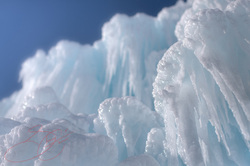Title.

The Arctic or Antarctica
The Arctic and Antarctica Lesson Plan
Date of Lesson: January, any year Teacher: Tara Bunner
Grade Level: Kindergarten Subject Area: Social Studies
Time Needed: About one month Topic: The Poles
Essential Question for this lesson:
- What are the Arctic and Antarctica like?
- Where can we find the Arctic and Antarctica on the globe?
- Why are the Arctic and Antarctica important and what can we do to help preserve the environment there?
What School of Education standard/s did you try to address in this lesson?
- Standard 1: Incorporates understanding o f human learning and development
- Standard 3: Demonstrates sophisticated curricular knowledge
- Standard 4: Demonstrates pedagogical knowledge in specific domains
- Standard 7: Understands and adapts to multiple forms of communication
- Standard 8: Employs varied assessment processes
- Standard 10: Employs varied instructional strategies
- Standard 12: Accommodates for all students
MMSD standards:
· Examine pictures of different environments to describe how they are similar and different from their own
· Explain how people’s actions can have an effect on the environment.
NCSS Social Studies Theme:
#3 People, Places, and Environments
Materials Needed:
- Books:
Global Warming by Seymour Simon
- Several topographical globes or maps
- Two large sheets of newsprint or butcher paper
- Paint, markers, pencils, crayons
- Glue
- Construction paper
- Chalkboard or white board, chalk or dry erase markers, eraser
- Video: March of the Penguins
Objectives:
- TSWBAT find the Arctic and Antarctica on the globe/map.
- TSWBAT find the Arctic Circle on the globe/map.
- TSWBAT describe the Arctic as a region that falls within several countries.
- TSWBAT describe Antarctica as a continent.
- TSWBAT name a few animals that live in the Arctic.
- TSWBAT name a few animals that live in Antarctica.
- TSWBAT name one plant that lives in the Arctic.
- TSWBAT name one plant that lives in Antarctica.
- TSWBAT list some differences between the Arctic and Antarctica.
- TSWBAT discuss the effects of global warming as it applies to the poles.
- TSWBAT encourage others to develop habits that will help preserve the polar ice.
The students have been studying different environments since the beginning of the school year. It is now January in the Midwest and the weather is cold and snowy. This is a good time to study the regions near the North and South Poles.
Lesson Opening:
The teacher will read and look at the pictures in the book Arctic and Antarctic by DK Childrens Publisher.
Procedures:
1. Where can we find arctic regions on the globe?
a. Using the globe, the teacher will show the students where to find the North and South Pole.
b. Using the globe, the teacher will show the students how to find the Arctic regions and Antarctica and the Arctic Circle.
c. The teacher will explain that Antarctica is a continent, but the Arctic is not. Several countries have Arctic regions.
d. The children will use their topographical globe/maps to find Arctic regions at the top of their maps and Antarctica at the bottom of their maps.
2. What are the Arctic and Antarctic like?
a. The students will decide on which region they want to become experts.
b. Given the following list of books, the students will divide into two groups to explore their region.
c. The teacher will give each group a large sheet of butcher paper or newsprint, as well as markers, paint, and construction paper to make a mural of their environment.
d. The students will create their environmental murals depicting the plants and animals and weather appropriate to their environment
e. The teacher will hang the Arctic region mural at the top of the classroom wall
f. The teacher will hang the Antarctic mural at the bottom of the classroom wall.
g. Each group will take turns presenting what they have learned about their environment
h. The students will each make a Venn diagram listing the differences and similarities of the two poles.
3. What can we do to preserve arctic regions?
a. The teacher will read, show, and paraphrase the book, Global Warming by Seymour Simon.
b. The students will listen for ideas that they or their families can use to do their part in preserving the environment.
Closure:
The students will watch the movie March of the Penguins. After the movie, the students will discuss what they learned from the movie and their favorite parts of this lesson.
Special Considerations:
The teacher should preview the video March of the Penguins because there are some sad and mildly violent parts in the movie though it has a rating of G. Since the teacher knows her students, she will know if she needs to skip through some parts of the movie.
Assessment:
Assessment will be formal and informal. The teacher will formally assess the student’s work on their murals as well as their Venn diagrams. She will informally assess as she listens to the students discussions, questions, and answers.
Annotated Bibliography
DK Publishing. (2006). Arctic and Antarctic (Eye Wonder). New York: DK
Children.
A great reference book for young children, this book has beautiful photographs and explanations that teach the difference between the Arctic and the Antarctic.
Simon, S. (2010). Global Warming. New York: Collins.
While this book is a little above Kindergarten children, it is a useful resource with very nice pictures. The teacher should paraphrase much of it to hold the interest of her students. This book teaches us about global warming in a non-alarmist way and offers hope through things we can do to reverse or slow down the trend.
